Editor of this issue: Jonas Zdanys
Copyright © 1979 LITUANUS Foundation, Inc.

|
LITUANUS
LITHUANIAN QUARTERLY JOURNAL OF ARTS AND SCIENCES
Volume 25, No.3 - Fall 1979
Editor of this issue: Jonas Zdanys ISSN 0024-5089
Copyright © 1979 LITUANUS Foundation, Inc. |

|
ELENA URBAITIS:
SHIFTING PLANES OF EMOTION
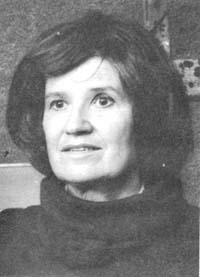 The art of Elena Urbaitis is the result of an artist who migrated from country to country, indoctrinating herself with the best art education each nation had to offer. The result is an art which has the stability of traditional art and yet the intensity of her individuality.
The art of Elena Urbaitis is the result of an artist who migrated from country to country, indoctrinating herself with the best art education each nation had to offer. The result is an art which has the stability of traditional art and yet the intensity of her individuality.
Elena Urbaitis began studying art in her native Kaunas, Lithuania. Forced to flee her homeland as a young girl, she studied wherever she traveled — at the Louvre in France, at the École des Metiers and at the Bildenden Kunste in Germany. Her artistic sensibilities realized, she was offered several scholarships including one from Alabama College which brought her to the United States. There she remained in order to study with Wil Barnett at the Art Student's League and to earn a Masters of Fine Arts from Columbia University in New York. As her art matured, the assimilation of her travels manifested themselves in new terms, although her art bore specific references to earlier twentieth century styles. Reminded by Wil Barnett of the importance of constructing the composition, Urbaitis' art captures the "push and pull" of a Hans Hoffman yet uses the bold colors of DeKooning. Like Cezanne,her view of nature is one composed of geometricized forms of contrasting colors, yet she looks to Matisse's collages and cut-outs in order to study the interrelationship of colored shapes.
Urbaitis works in collage and oil paints, but in both she achieves a similar format. The varied textures and bright colors of her paintings make the overlapping planes appear as sharp as if they were collage. Similarly, her collages incorporate painted paper. In both mediums, planes of contrasting colors are carefully placed in order to contribute to the "color-structure" of the work. These planes are connected by intersecting lines while the contrasting hues maintain a "push and pull" effect. Textured areas punctuate the composition, both in her paintings and collages, in order to tone down the vivid pure color, to vary the overlapping planes, and to add to the papier-collé affect. This juxtaposition of flatly colored and textured shapes creates a tension pictorially and emotionally in which the fragmentary nature of the forms evoke connotations of the unknown.
The esthetic tensions created within Urbaitis' work (red versus blue, two versus three dimensional space) are paralleled by a tension of psychological elements in her work — the shifting planes of color representing shifting psychological nuances. Reds are used for their "screaming" quality, blues for their "loneliness," and together with other contrasting colors they reflect the dissonance found in our lives. This aspect of her work is, however, not preplanned; it grows intuitively during her creative processes. As in the collage Reminiscences, the forms were placed together from the unconscious while maintaining an esthetic coherence. Number 32, more specifically, represents an individual who is devoid of a personality and is caught alone in a whimsical but frigid environment. Despite the seemingly bright colors, the hues in the work contain a blue cast and become "cool-bright" colors which convey a detatched mood. The figure represents the students in Urbaitis' art classes; students she sees as craving for attention and more personal recognition within a non-empathetic world.
In Enclosed the psyche is entrapped in a lonely world; the painting captures the concept of imprisonment and isolation and relates to Urbaitis' own autobiography. Indeed, when Elena came to the United States she was isolated from her homeland and family. Like the head in the composition she has emerged from a world of structured, shifting, and juxtaposed planes of reality. This is the psyche of the composition — well formed fragments of the human form trapped within a montage and yet isolated from it.
Beyond One's Grasp, a diptych, sums up a variety of themes in Urbaitis' work. Here, she shows a hand striving for material needs. In the lower half of the two panels, she depicts geometric forms reminiscent of bridges and technological machines. Urbaitis, thus, shows a world composed of organic forms juxtaposed against the man-made and industrial. This painting, like her other work, portrays the ambiguity of pessimism and optimism, the shifting planes of cool and bright colors, the boxed-in but striving form; a world derived from Cezanne and Matisse yet haunted by materialization, technology and loneliness.
GAIL GELBURD-KIMLER,
Curator at Morris Museum of Arts and Sciences,
Morristown, New Jersey

REMINISCENCES Collage 1976 20" x 16"
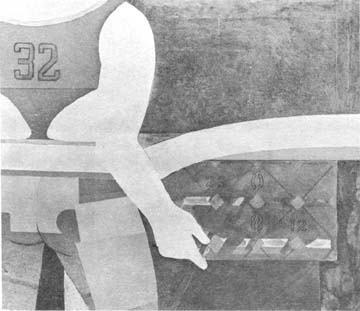
THIRTY TWO Acrylic 1977 34" x 36"
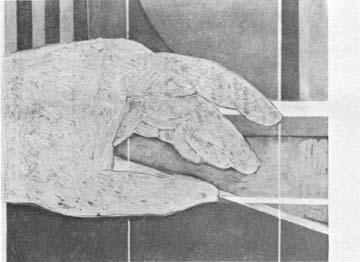
REACH Oil 1978 34" x 36"
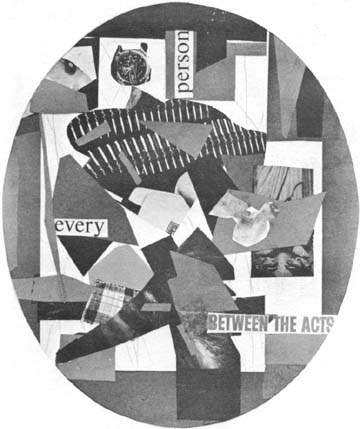
EVERY PERSON BETWEEN THE ACTS 17" x 14"
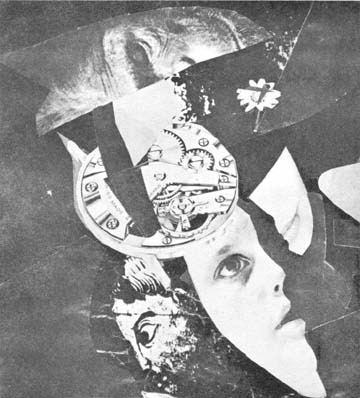
NOW AND THEN Collage 17" x 14"
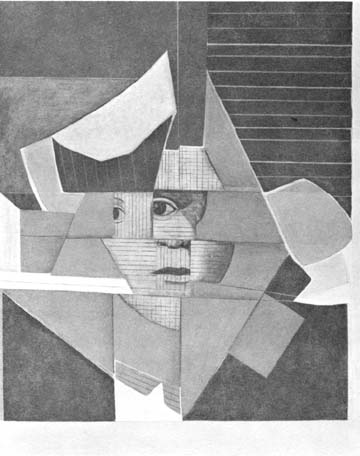
ENCLOSED Oil 1978 60" x 48"